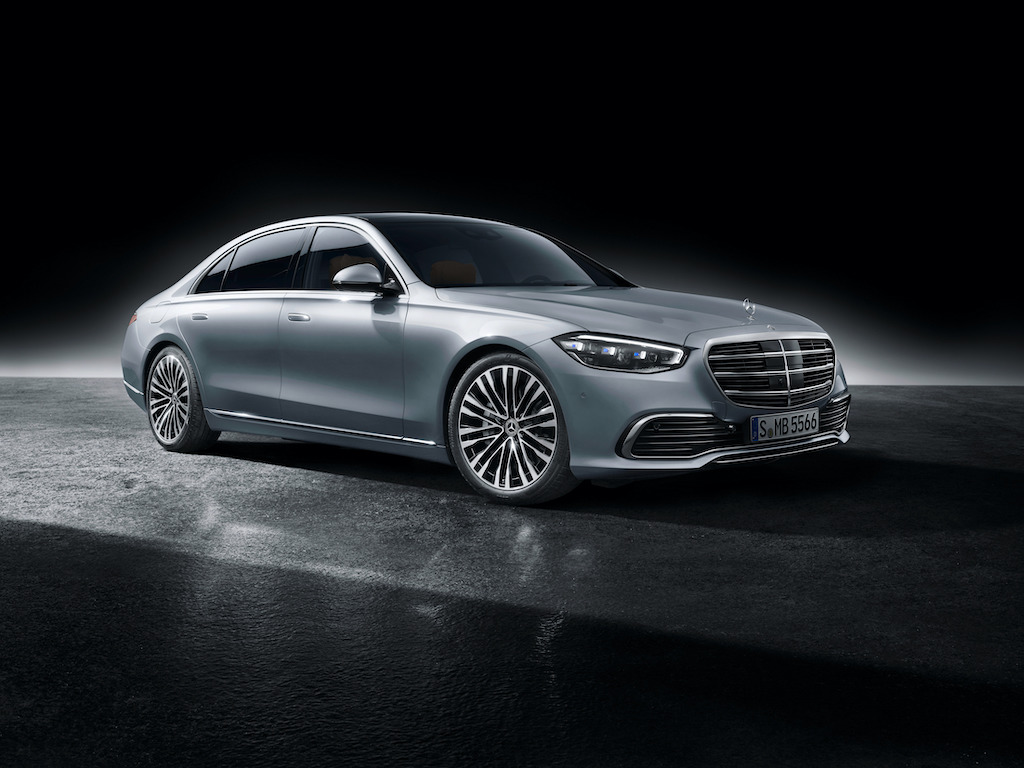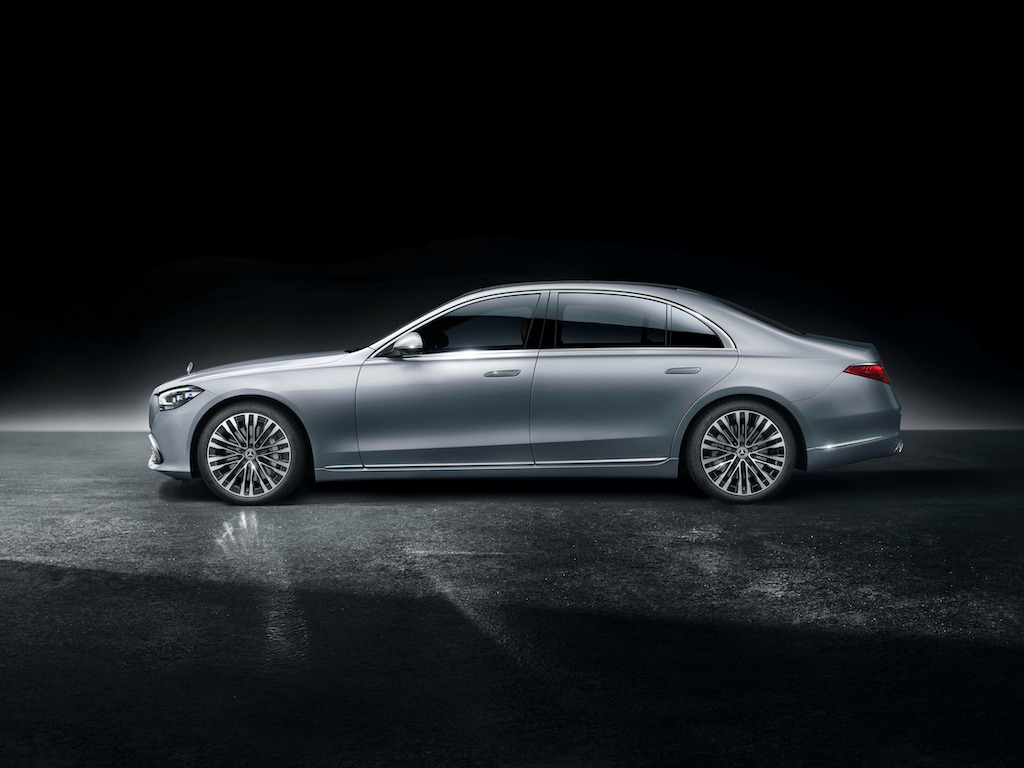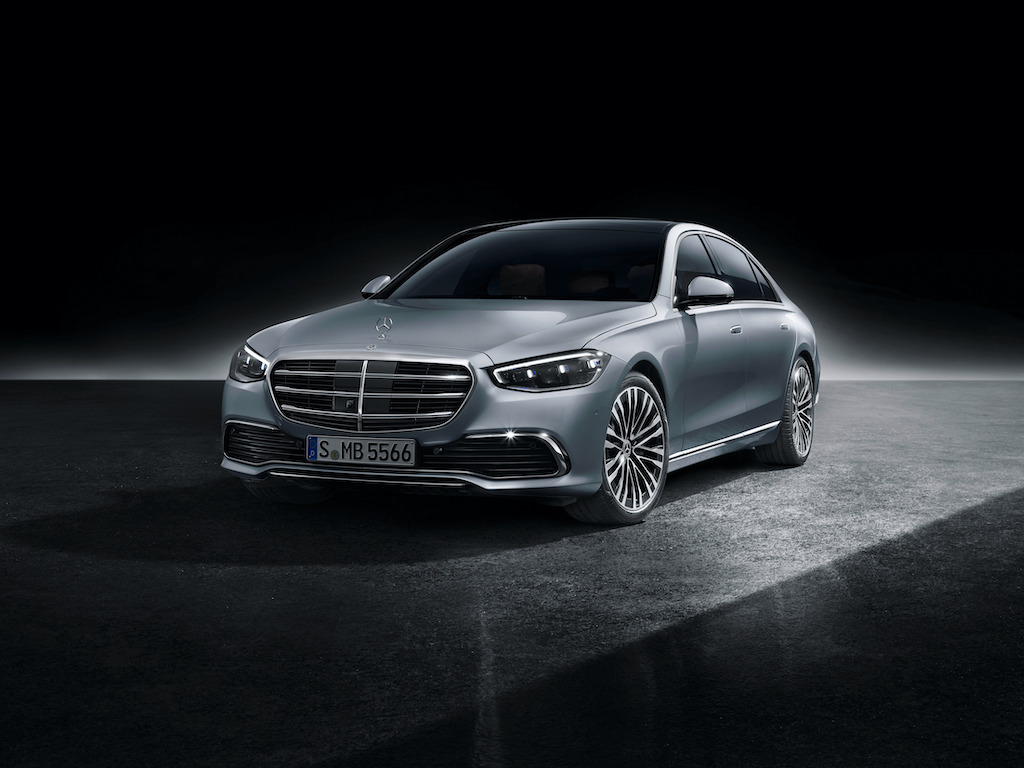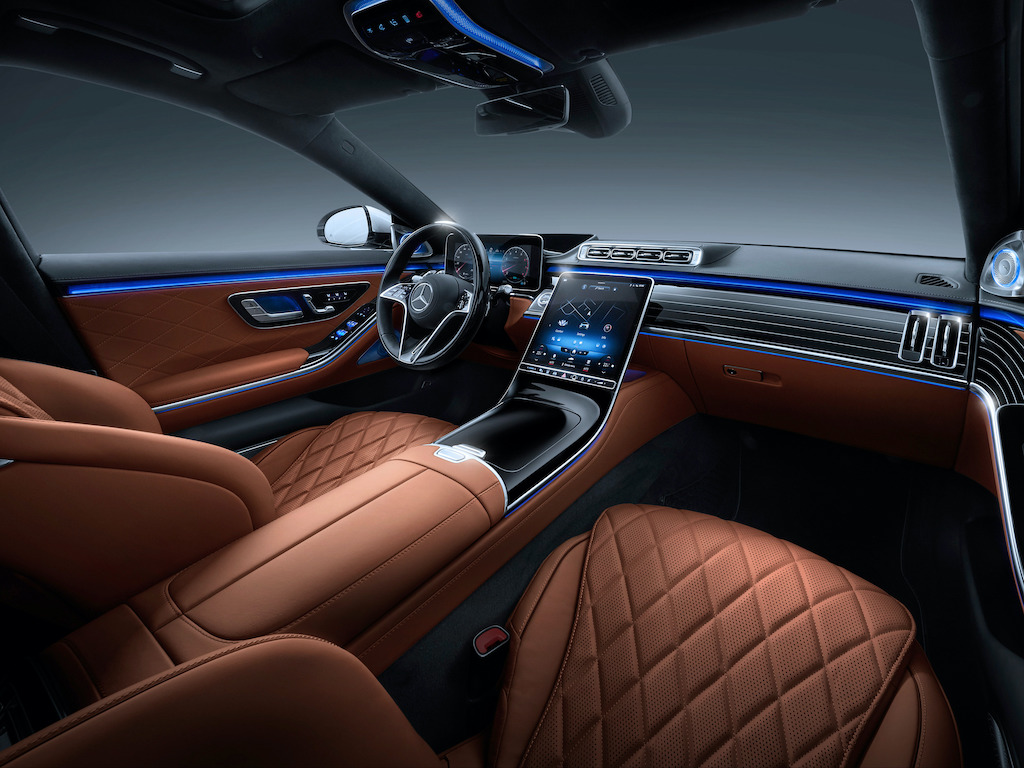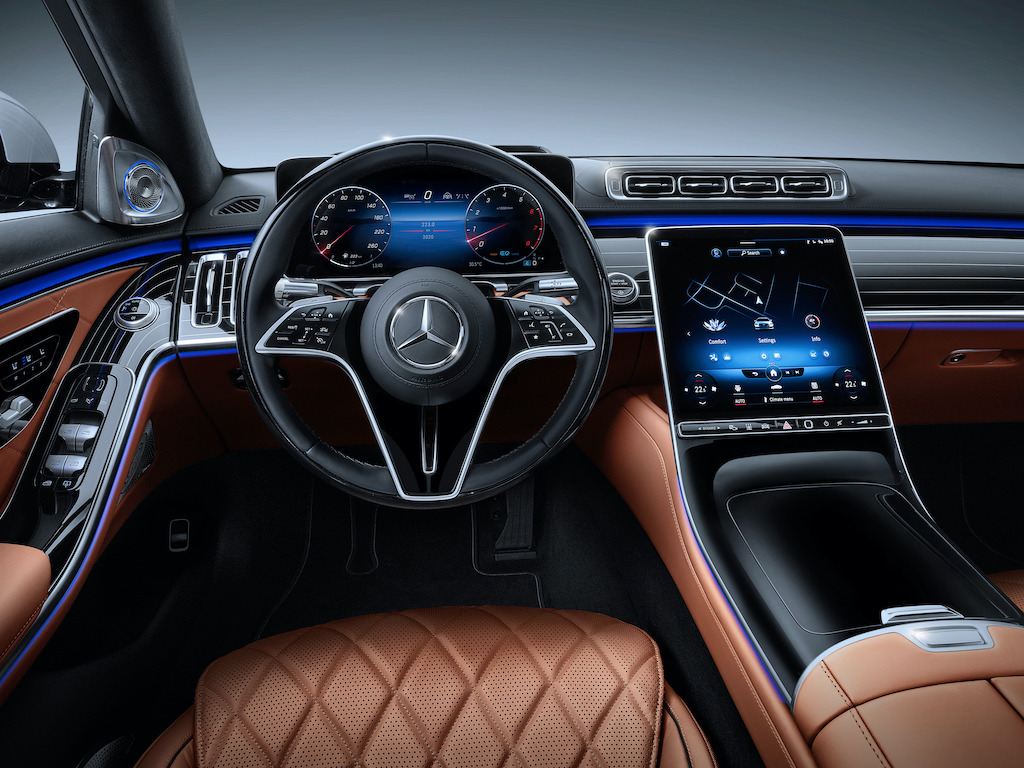2021 Mercedes S-Class brings tech bonanza
It’s described as the most technically advanced car Mercedes-Benz has ever produced and now the all-new 2021 S-Class has been revealed ahead of its arrival in late 2020.
The flagship luxury limo, which is due to open for orders this month, will put the focus on a new experience of automotive luxury, introducing a vast array of new innovations as well as extra space in almost every parameter; the short wheelbase model that’s proved popular in Europe now has 5mm more legroom while boot capacity has increased by 20 litres to up to 550 litres.
The seventh-generation S-Class, codenamed the 223 internally, is also around 60kg lighter than the previous model and brings a lower drag coefficient than before.
Initial engine details reveal that there’ll be a new plug-in hybrid version, bringing an all-electric range of around 100km (62 miles) – more than double the current S560e. There will be no fully electric version as that role is being assumed by sister model the EQS, expected to arrive 2022.
But for the initial launch range, the focus will remain on six-cylinder in-line petrol and diesel engines in various output classes. These will be followed by a V8 mild hybrid petrol engine using an integrated starter-generator and 48-volt onboard electrical system. Speaking to Fleet World, Dirk Fetzer, director of sales and marketing, and Oliver Thone, S-Class project director, said the diesels are expected to remain popular in Europe although the new petrols will be attractive elsewhere.
New technologies are many and varied but of key importance for fleets will be the second-generation of the MBUX (Mercedes-Benz User Experience) infotainment system. It makes its debut on the S-Class and brings a five-screen set-up (three screens in the UK), some with OLED (organic light-emitting diode) tech, which brings better quality. A new 3D driver is available and makes use of eye-tracking.
Also included is a choice of two head-up displays, including a supersized one with augmented reality content, helping drivers to navigate.
The full MBUX system can also be updated over-the-air in the new S-Class; in total, OTA updates are available for more than 50 electronic components, also including the driver display and driving assistance systems.
In mainland Europe, MBUX will also offer an Interior Assist feature using learning algorithms to second-guess drivers’ and passengers’ needs and act accordingly, eg shutting the sun blind.
The S-Class also introduces the latest generation of the Driving Assistance Package with new and numerous improved functions, including intelligent compliance with speed limits.
A new E-Active Body Control will also be available in mainland Europe, raising the vehicle body almost instantaneously by up to 8cm when a side impact with another vehicle threatens, spreading the impact and potentially saving occupants from injuries.
An optional Drive Pilot feature is expected to arrive from the second half of 2021, enabling the S-Class to drive in level 3 automated mode on “suitable motorway sections”.
It will also bring rear-axle steering (but not planned in the UK), giving a two-metre reduction in the turning circle and aiding its use in cities.
The new S-Class also brings updates to the “Hey Mercedes” voice assistant, which has wider capabilities. It can also now be controlled from the rear.
Speaking to Fleet World, Mercedes’ Dirk Fetzer, director of sales and marketing, and Oliver Thone, S-Class project director, said there will be an S-Class for all fields, including chauffeur fleet requirements, and added that there “ is still the opportunity with buyers moving up from smaller-size models.” They explained: “We see growth from key rivals and fringe segments.”
The last model, launched in 2013, sold more than 500,000 units, of which more than a third went to China and the majority overall were long wheelbase.
Mercedes-Benz added that the loyalty rate for the S-Class is especially high. More than 70% of S-Class customers in the US go on to choose another vehicle from the brand, rising to some 80% in Western Europe.

